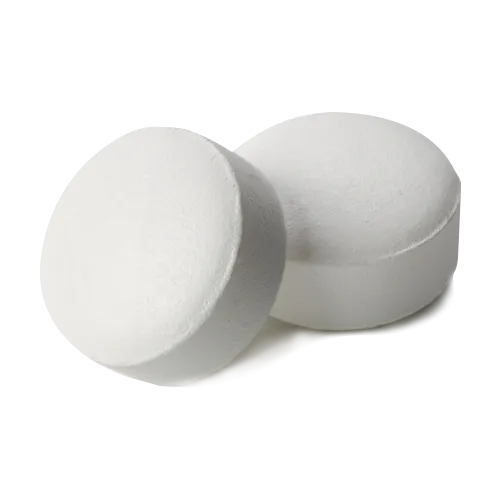Overview
Lamisil, generically known as terbinafine, is an antifungal medication used to treat fungal infections such as athlete’s foot, jock itch, ringworm, and nail infections (onychomycosis). It inhibits fungal growth, effectively clearing infections. Available in topical creams, gels, sprays, and oral tablets, Lamisil provides versatile treatment options for various fungal conditions.
History of Development and Approval
Developed by Novartis, Lamisil received FDA approval in 1996 for treating fungal infections. Its broad-spectrum efficacy and safety, backed by extensive clinical trials, have made it a widely used antifungal therapy.
Key Benefits
- Broad-Spectrum Action: Targets a wide range of fungi affecting skin and nails.
- Multiple Forms: Creams, gels, sprays, and tablets allow tailored treatment.
- Rapid Symptom Relief: Quickly reduces itching, redness, and scaling.
- Effective for Onychomycosis: High success rate in treating persistent nail infections.
Unique Properties
Lamisil inhibits squalene epoxidase, disrupting ergosterol synthesis in fungal cell membranes, leading to fungal cell death. Its effectiveness against both dermatophytes and yeasts, combined with high tissue penetration, ensures robust treatment outcomes.
Comparison with Similar Medications
Compared to other antifungals, Lamisil offers:
- Faster Results: Often clears infections quicker than alternatives like clotrimazole.
- High Cure Rates: Superior efficacy for nail infections.
- Convenient Dosing: Once-daily oral dosing enhances compliance.
Safety and Tolerability
Lamisil is generally well-tolerated. Topical forms may cause mild itching, redness, or irritation at the application site. Oral forms may lead to nausea, headache, or abdominal pain. Rare serious effects include liver toxicity or severe skin reactions, requiring prompt medical attention. Regular monitoring ensures safe use.
Indications for Use
Lamisil is indicated for:
- Athlete’s Foot: Treats fungal infections of the feet.
- Jock Itch: Addresses groin fungal infections.
- Ringworm: Clears skin fungal infections.
- Onychomycosis: Treats nail fungal infections.
Dosage and Administration
Adults: Oral: 250 mg once daily (onychomycosis: 6–12 weeks; skin: 2–4 weeks). Topical: Apply once/twice daily for 1–2 weeks.
Children: Weight-based oral dosing (e.g., 125–250 mg/day), provider-guided.
Elderly: Standard dosing, monitor liver function.
Timing: Oral: any time; topical: clean, dry skin.
Notes: Complete full course; avoid occlusive dressings for topical use.
Mechanism of Action
Terbinafine inhibits squalene epoxidase, disrupting ergosterol production, accumulating toxic squalene, and causing fungal cell death.
Composition
Active Ingredient: Terbinafine hydrochloride, drives antifungal effects.
Inactive Ingredients: Tablets: cellulose, magnesium stearate; topical: alcohol, benzyl alcohol for formulation stability.
Side Effects
Common: Topical: itching, redness; oral: nausea, headache, abdominal pain.
Rare: Taste disturbance, fatigue.
Serious: Liver toxicity, severe skin reactions require urgent care.
Prevention of Side Effects
Follow dosing instructions, monitor liver function (oral), avoid topical contact with eyes/mucous membranes. Report symptoms promptly.
Contraindications
Avoid in hypersensitivity to terbinafine or chronic liver disease.
Warnings and Precautions
Monitor liver function (oral), check for skin reactions. Caution in renal/hepatic impairment or immunosuppression.
Drug Interactions
CYP2D6 inhibitors (e.g., fluoxetine) increase terbinafine levels; rifampin reduces efficacy. Disclose all medications.
Overdose
Symptoms: nausea, dizziness, rash. Seek emergency care immediately.
Pharmacokinetics
Absorption: Oral: well-absorbed, peak 1–2 hours; topical: minimal systemic.
Distribution: High in skin/nails, protein-bound.
Metabolism: Liver via CYP enzymes.
Elimination: Urine (80%); half-life 36 hours (oral), longer in nails.
Dosage Forms
Tablets (250 mg), creams, gels, sprays (1%) for targeted or systemic treatment.
Pregnancy and Breastfeeding
Use if benefits outweigh risks (Category B); minimal milk excretion, consult provider.
Storage
Store at 20°C–25°C (68°F–77°F), dry, light-protected, away from children. Dispose expired properly.
Clinical Evidence
Trials confirm Lamisil’s high cure rates for skin and nail fungal infections, with faster symptom relief and sustained efficacy versus placebo.
Conclusion
Lamisil is a potent antifungal for skin and nail infections, offering rapid relief and high cure rates. Follow dosing, monitor effects, and consult providers for optimal outcomes.




